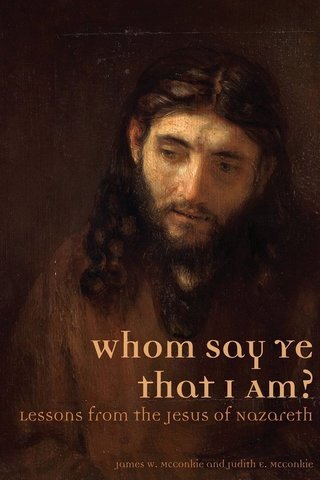Jesus made numerous visits to His followers—both to crowds and to individuals—after His resurrection. Examination of those visits can teach us 1) that His inner circle did not understand His teachings about His death; 2) that each appearance to the members of His inner circle was personalized; and 3) that His cautions, blessings, and instructions to those first witnesses became a handbook for leading the Kingdom of God on Earth in His absence.
But we should back up a bit to explain how we learned those lessons. In the fall of 2017, we had sent our publisher a “completed” manuscript of a book our daughter had provoked us into writing after she spent a semester at BYU’s Jerusalem Center studying Jesus in context; her experience turned into our 10-year project called Whom Say Ye that I Am? Lessons from the Jesus of Nazareth. Our editor had sent us back a chapter on Jesus and His inner circle that he suggested should be dropped.
Originally, the chapter was designed to be about the lessons we had learned from accounts of Jesus’s post-resurrection appearances to His inner circle of disciples. But we had allowed ourselves to be seriously diverted and, consequently, the lessons had become lost.
More thinking was necessary and illuminating. Here are three of several lessons we learned as we re-examined Jesus Christ’s appearances to His followers following His resurrection:
1. Jesus Christ demonstrated that He will return to love and reclaim each of us.
The Gospels report that His inner circle did not understand His teachings about His death. Their cultural context blurred the lens through which they viewed Jesus’s mission. Recall the famous denial from Peter as the disciples walked toward Caesarea Philippi. Peter took Jesus “by the arm and began to rebuke” Him after Jesus had “plainly” taught them He would suffer, be killed, and then raised on the third day. “This will never happen to you!” Peter protested (Matt. 16:21-23). Luke’s Gospel records that as they made their way to the last Passover, Jesus told them again what would happen. Then he writes, “And they understood none of these things: and this saying was hid from them, neither knew they the things which were spoken” (Luke 18:34).
Hence, they were bitterly disappointed when it all actually happened. Even those of His inner circle faltered in their faith. Their hearts were filled with doubt (Luke 24:38).
Yet when He did return, they saw that His faith in and compassion for them had never abated despite the spiritual infidelities of some. For example, John records that when He called at dawn to the despondent disciples from the shoreline of Galilee, Peter the Denier jumped into the water to swim to shore. Jesus fed them and then directed them three times to feed his “lambs” (John 21:1-14). Jesus would never have committed Peter and the others to lead with authority without first assuring them they were loved and forgiven. The lesson: The disciples’ views of Jesus as Messiah—and ours—can be masked by lack of knowledge or time, or the spiritual turbulence of their—or our—most private convictions. Yet because of His example, we know that the resurrected Jesus will return to love and reclaim each one, including ourselves.
2. Each appearance to the members of His inner circle was personalized.
That is, we saw that He tailored each one to the needs of those men and women who became His witnesses. He offered solace, He pardoned, He admonished, and He qualified each one for the tasks at hand. Witness the two disciples on the road to Emmaus who painfully related to the stranger their hope He was the real Messiah. Then when Jesus saw the sadness written across their faces, He taught them from the scriptures and supped with them to help them understand what it really meant to be the Messiah of mankind (Luke 24).
For Mary, He comforted her heartbroken grief by speaking to her gently and alone outside the tomb. The account is altogether brief and yet intimate. “Cling to me no longer” says one translation of the end of the exchange (John 20: 10-18, New Living Translation). She found, as a result, confidence as a woman to rush to the disciples to become “an apostle to the apostles”— a witness to the witnesses. The lesson: He knows our needs, each one.
3. Finally, we learned that the cautions, blessings, and instructions to those first witnesses were purposeful.
Collectively they became a handbook for leading the Kingdom of God on Earth in His absence.
As we stopped to think about how the content of each appearance must have not only quieted the staggering emotional trauma of losing the Man who became their longed-for and promised Messiah, we also came to understand how each appearance provided for those of us who also make attempts to be His disciples in the 21st century.
Lead image from lds.org
James and Judith McConkie are the authors of Whom Say Ye That I Am: Lessons from the Jesus of Nazareth, published by Kofford Books. It is available at Deseret Book stores and online and through barnesandnoble.com and amazon.com. This is the first in a series of essays about the book. Watch for more on ldsliving.com.



